Graham Reid | | 5 min read
The Beatles 1958: In Spite of all the Danger
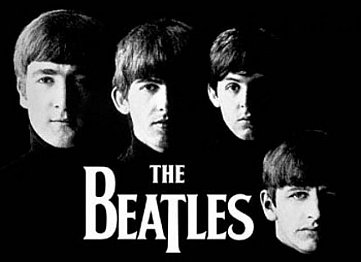
The
divorce was as messy as most when, 40 years ago in April 1970, the
Beatles broke up. As John Lennon put it later that year on his
Plastic Ono Band album, “the dream is over”.
But
it was Paul McCartney who first made it public and official.
In
April 1970 McCartney released his first solo album -- Lennon and
George Harrison had already been involved in individual projects
outside the Beatles -- but included with it a press release in which
he asked and answered his own question, “Will the Beatles ever work
together again?”
His
answer: “I do not foresee a time when the Lennon & McCartney
partnership will be active again in song writing.”
In
the years which followed there was constant sniping between the
former members, and endless litigation.
The
memory of the band which had defined and in many ways shaped the 60s,
which had delivered some of the most memorable and innovative music
in pop, became increasingly tarnished.
And
if there seemed no real closure -- even after Lennon’s murder in
1980 the other three were asked if the Beatles would ever re-form --
at least their origins were there, written in almost magical memories
by those who knew them in Liverpool when they were a young pop group
carrying the hopes and pride of their city with them.
Liverpool
today -- progressive and architecturally innovative -- is a very
different city to the one which nurtured the Beatles.
But
numerous tours, the excellent Beatles Story museum and of course the
resurrected Cavern Club where they famously played 292 shows between
July 1961 and August 63, draw an estimated 600,000 visitors annually
because of the Beatles connection -- and they spend more than $45
million.
Money
can’t buy love, but it is giving many a very good living in
Liverpool -- and with the film Nowhere Boy about the life
of the young Lennon, there seems no end of interest in the Beatles
story.
Nowhere
Boy -- starring Kristin Scott
Thomas as Lennon’s Aunt Mimi who raised him, Anne-Maria Duff as his
mother Julia, newcomer Aaron Johnson as Lennon and Thomas Sangster
(the boy from Love Actually
and more recently in Jane Campion’s Bright Star)
as McCartney -- consistently won four star reviews in Britain and was
nominated for four Baftas for its account of the teenage Lennon on
his way to his first rock’n’roll band and those legendary shows
in the Cavern.
There
are two Caverns in Mathew St today, or more correctly two-thirds of
one.
The
Cavern Pub with its rock’n’roll memorabilia pulls regulars but
wasn‘t there in the Beatles day; the actual Cavern where the
Beatles, Cilla Black, Gerry and the Pacemakers, the Searchers and
hundreds of other bands played was demolished in March 73.
In
the early 80s after John Lennon’s murder a replica Cavern was built
a few metres up the road from the original site using many of the
original bricks. And while it isn’t entirely authentic -- it is
however the same size, layout and scale -- it still holds an
excitement for the many who go there.
On
a night when I went there were the fiftysomething males supping beer
and trying to conjure up the atmosphere of the early 60s, but also a
group of liquored-up women in appallingly loud clothes out for a
hen’s party. They laughed and danced, and seemed to enjoy the
Cavern’s spirit more than the earnest wall-huggers nursing pints.
The
Cavern was a place where people had a good time. These lasses
certainly were.
The
Beatles Story in Albert Dock -- which doubled in size last year --
recounts the pop history of Merseyside and the rise of the Beatles
through a superb collection of memorabilia, posters, hand-written
lyrics, photos, and film footage. It includes reconstructions of
Hamburg clubs they played in, the music store run by Brian Epstein
(later the Beatles’ manager), the untidy office of Bill Harry who
edited Mersey Beat magazine, Hessy’s Music Centre where
young Liverpudlians (Beatles included) bought their instruments, and
Abbey Road studios in London where the Beatles recorded.
An
award-winning tourist attraction, it is a must-see in the city.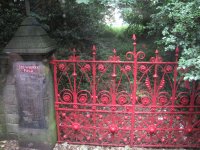
Then
there is the Magical Mystery Tour which takes the curious on a bus
tour to the member’s former homes, to the church in suburban
Woolton where Lennon and McCartney first met, past Strawberry Fields
and Penny Lane, and many other Beatles-related sites.
The
commentary is informative (and punctuated by Liverpudlian wit) and
offers visitors to the city a fascinating trip through the ordinary
suburbs, past palatial homes and through spruce middle-class
districts and villages, and notes the two cathedrals (the Catholic
one designed by an Anglican, the Anglican designed by a Catholic)
linked by the appropriately named Hope Street.
The
childhood homes of Ringo Starr and George Harrison are modest, those
of McCartney and Lennon more middle-class.
Even
if the Beatles’ story isn’t of much interest, the tours -- there
are two hour and full day options -- give an insight into the
diversity of life in Liverpool and take you places a tourist stuck in
the city centre might never see.
You
could stay in the Hard Days Night Hotel, four star boutique
accommodation which opened in early 2008. Located around the corner
from the Cavern, the hotel is Beatle-themed with their music playing,
photographs everywhere and each room has an image of a Beatle which
dominates.
The
hotel also has a store selling officially licensed merchandise from
cheap lapel pins to expensive photographs. And of course you can take a ferry across the Mersey to the sound of Gerry and the Pacemakers.
The
irony in all this Beatles-related tourism in Liverpool is that once
the group became famous they moved to London and rarely returned
other than to see family.
Yet
here is where the second greatest story ever told -- and arguably the
greatest story ever sold -- began, and the innocence of their
music from that period still excites.
Here
are the streets, pubs and places where they lived, met and played.
Liverpool
was the start of an exciting story with a great soundtrack, which
ended in bitterness and scrapping over management, money and musical
direction.
The
dream may be long over, but in Liverpool the sound of the Beatles
legacy -- the gentle swipe of a credit card -- plays on.



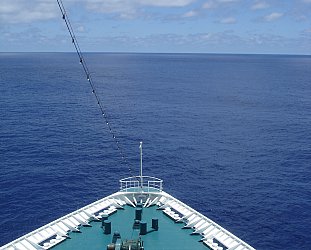
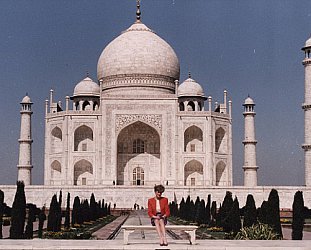

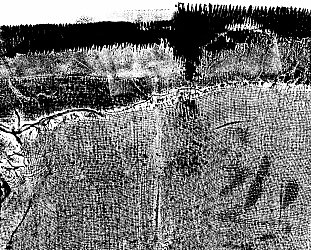
post a comment